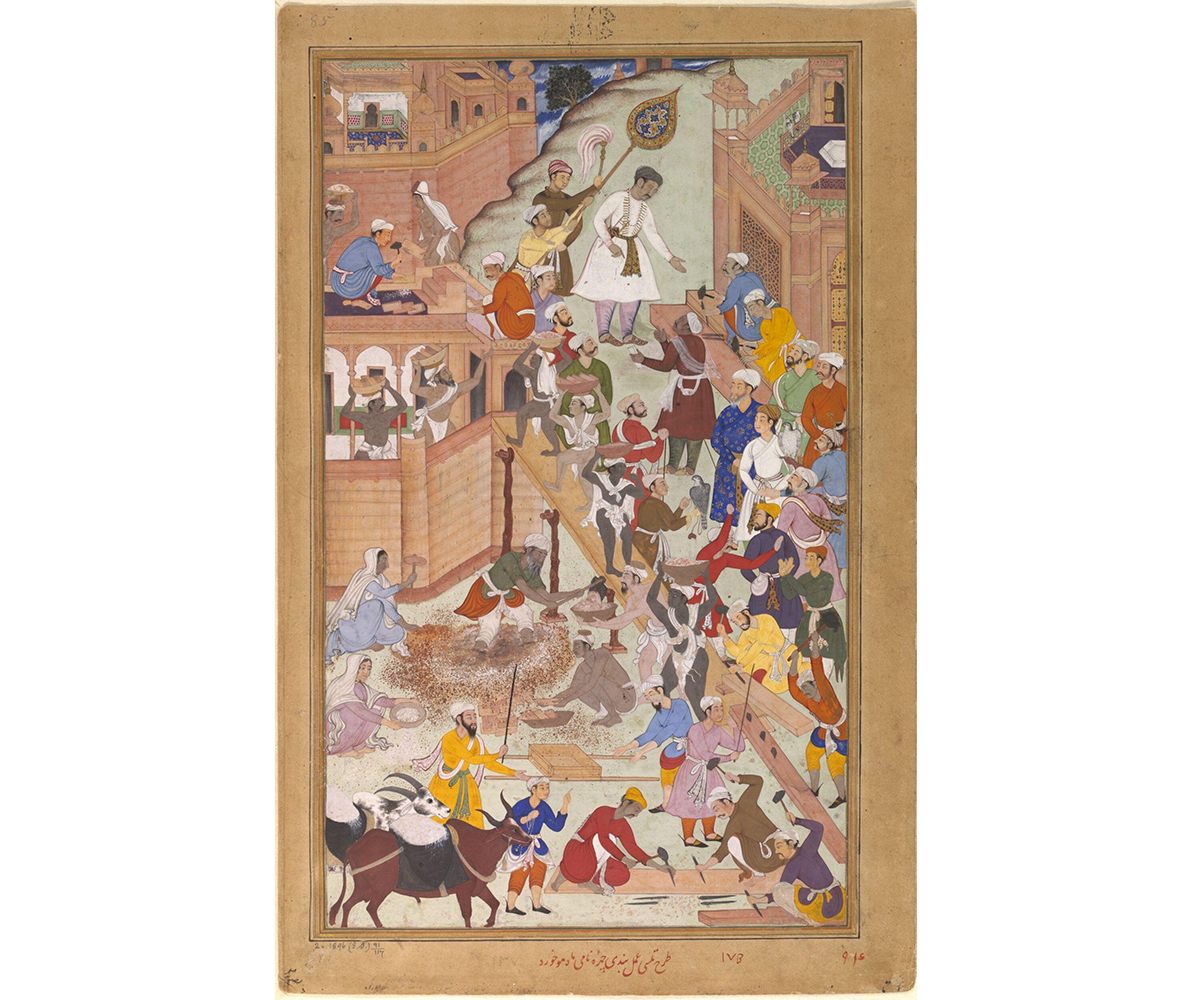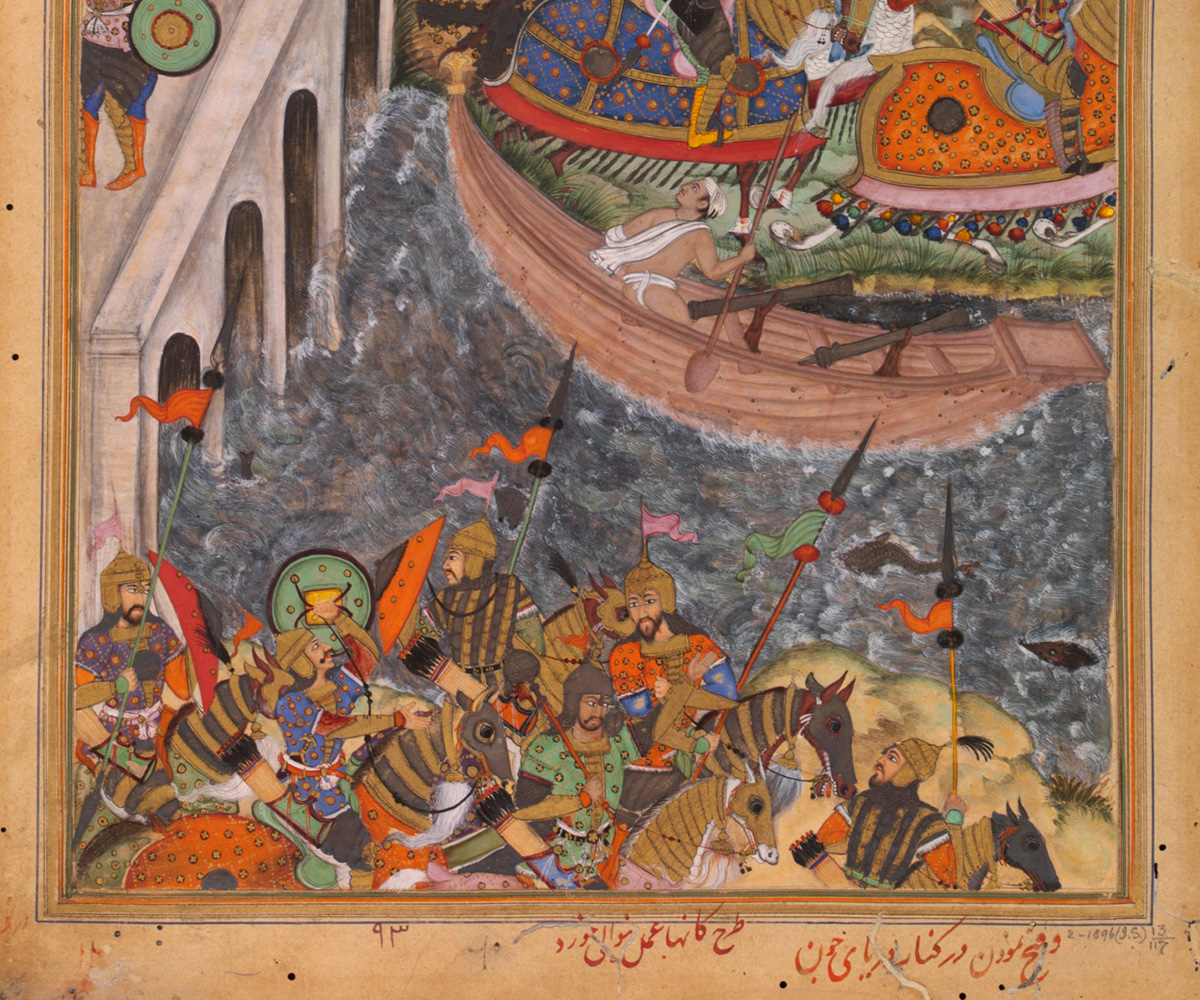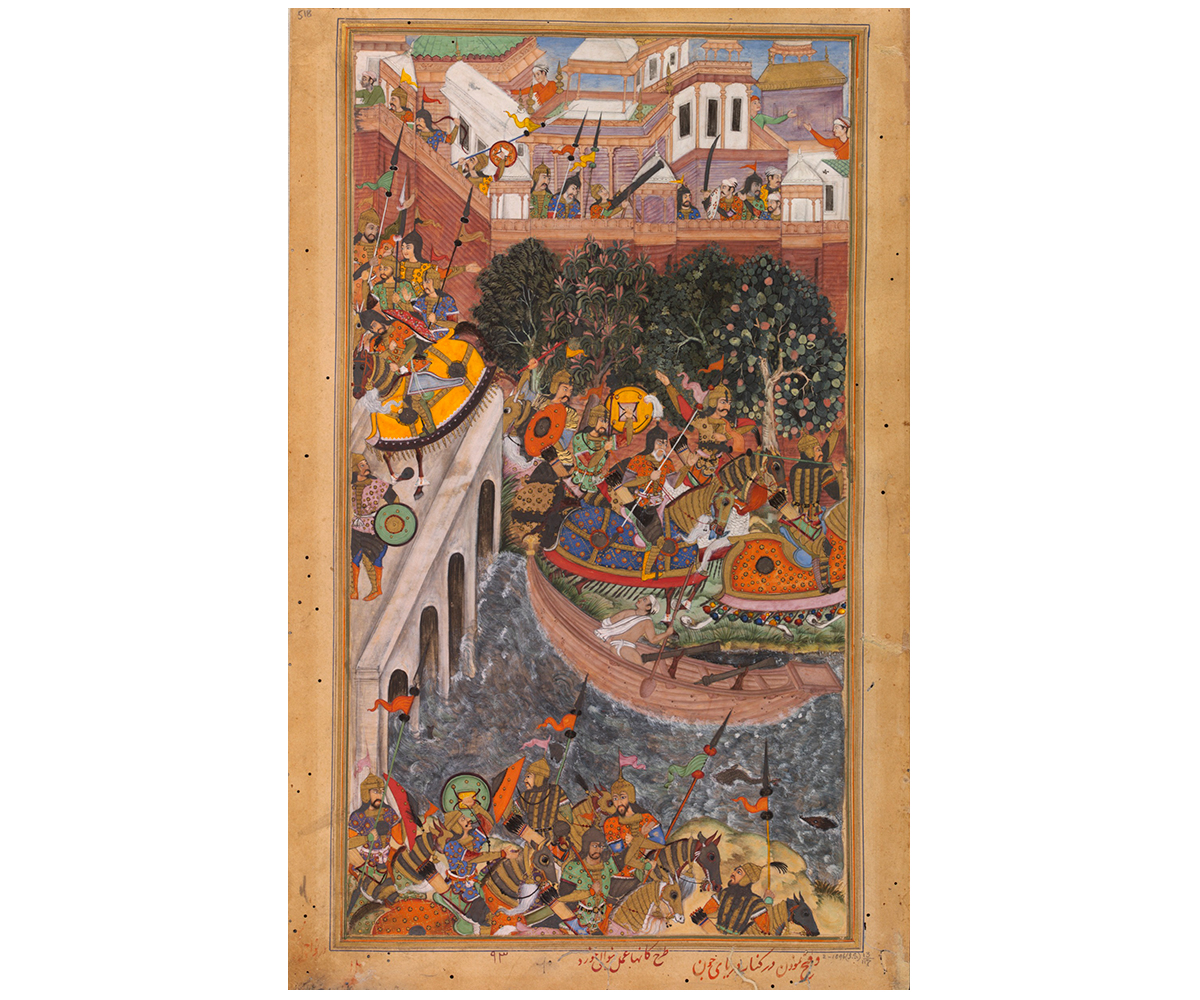PERSPECTIVES
Collaboration, Invention and Artistic Development: The Kitabkhanas of Mughal South Asia
An inscription in red ink, on the lower margin of a 16th-century painting illustrating Akbar supervising the building of Fatehpur Sikri, lists three people: Tulsi — a senior artist of Akbar’s imperial atelier — as the designer, Bandi — a relatively less accomplished artist — as the colourist, and Madhav Khurd as the portraitist. Another inscription in a painting showing the victory of the Mughal armed forces over the Afghans on the banks of the Gomti river in 1561 tells us that the painting was expected to be or was completed within a period of 50 days.
These and other such marginal inscriptions are perhaps the most important sources of information available to us on the workings and operations of the Mughal imperial kitabkhana: an institution of artists and administrators tasked with the production as well as maintenance of luxurious illustrated manuscripts. They also indicate that the production of such manuscripts was a collaborative and time-consuming exercise involving several artists of varied specialisations and stature. Aside from the artists, the book arts involved papermakers, calligraphers and binders who worked in concert with each other according to assigned schedules and prescriptions.
Deriving from the Arabic word for book, ‘kitab’, and Persian word for house or dwelling, ‘khane’, the kitabkhana, literally meaning ‘bookhouse’ or ‘library’ emerged as an important institution in western Asia around the thirteenth century. The term also referred to the private collections of books that were collected by noblemen, princes and kings in the Persianate world. Over generations, a keen interest in books, manuscripts, and paintings became integral to the education and identity of a Mughal prince.
The Mughals had as their ancestors two great military figures — Turkic conqueror Timur and Mongol ruler Genghis Khan. Conquering vast swathes of land, both left behind a particular legacy of political expansionism as well as cultural refinement. Timur’s sons and grandsons were not only great conquerors but also scholars and great connoisseurs of art. Babur, the founder of the Mughal dynasty, was in the midst of war nearly throughout his life. Yet he managed to write the Diwan-i-Babur — a collection of poems, and the Baburnama — a memoir; as well as practice calligraphy and invent his own script, known as the Khatt-i-Baburi, commission gardens and mosques, and collect fine books and manuscripts. The love of fine books, in particular, was shared by Babur’s son Humayan, who even carried books to encampments and battles, where an entire tent would be dedicated to his library. On a visit to the Persian court of Shah Tahmasp in Safavid Persia (present-day Iran), he was struck by the aesthetic sophistication he encountered there and brought back to India two Persian master artists — Mir Sayyid Ali and Abd us Samad. These artists would go on to establish his imperial kitabkhana, which, by the sixteenth century, had come to denote a place where books were not only collected and stored but also produced — enlarging the definition of the kitabkhana to a studio, scriptorium, atelier or workshop.
Whilst the term kitabkhana suggests a particular physical space, in reality, the institution was a mobile, impermanent nexus of artistic production — one which was vastly dependent on the fortunes, tastes and ideologies of its patron(s).
Humayun’s son and successor Akbar expanded the infrastructure for book-making and painting, and his atelier grew from about thirty artists in 1557 to over one hundred in the 1590s, consisting of painters, colorists, calligraphers, bookbinders, and other specialists. In order to efficiently carry out a large number of projects — including illustrated manuscripts, individual paintings and designs for other objects — the hierarchy within the atelier remained somewhat fluid and highly collaborative. Within a given folio, a master painter composed the image based on the text to be coloured in by a junior artist. The expanding atelier hired artists from far and wide: aside from local and Persian painters, artists were brought in from western India, Kashmir, and Lahore, as well as other parts of South Asia. These artists brought their own artistic traditions with them, which would not only shape the visual language that was to develop in the Mughal painting studio, but are also evident in the diversity of style within the early manuscripts.
Only a few decades later, under Jahangir, the structure changed enormously. The number of artists retained by the imperial atelier for long-term projects was significantly reduced: scholars suggest that there were only about thirty artists in Jahangir’s atelier — each one a master, who worked individually on paintings. The idea of the artist as an author, an individual whose work is distinct from that of another artist, became important in this period.
The atelier and its artists that flourished under the patronage of Akbar and Jahangir were only modestly functional in comparison to the reigns of Jahangir’s successors, Shah Jahan and Aurangzeb. While Shah Jahan maintained and funded the atelier, his interest and resources were mainly directed towards architecture. The paintings of this period became primarily a medium of courtly representation with a stiff formality, lacking the experimentation and aesthetic flair they showed under the previous emperors. Nonetheless, the muraqqas and illustrations from this period were highly naturalistic and technically accomplished.
Aurangzeb’s religious orthodoxy led him to move funding away from the atelier a few years into his reign, but for most of the 1660s the emperor tolerated painting as a courtly art. With the exception of a revival under the reign of Muhammad Shah, Mughal patronage for miniature painting dwindled significantly in the 18th century. Artists were forced to seek employment outside the Mughal imperial court, in smaller Rajput and Maratha courts.
The little we know about the kitabkhanas introduces us to a time of great artistic collaboration, when artists, bookmakers, writers and patrons combined intellectual erudition with extraordinary levels of artistic sophistication to create objects of everlasting beauty.
Bibliography
Rice, Yael. “Workshop as Network: A Case Study from Mughal South Asia.” Artl@s Bulletin 6, no. 3 (2017): 51–65.
Seyller, John. “Codicological Aspects of the Victoria and Albert Museum Akbarnāma and Their Historical Implications.” Art Journal 49, no. 4 (1990): 379–87. https://doi.org/10.2307/777139.
Simpson, Marianna Shreve. “The Making of Manuscripts and the Workings of the Kitab-Khana in Safavid Iran.” Studies in the History of Art 38 (1993): 104–21. http://www.jstor.org/stable/42620405.
















